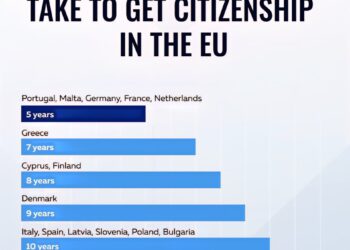Select Language:
Countries That Share Deep Cultural Bonds in 2025
Australia and New Zealand: Two Sides of the Pacific
Australia and New Zealand have long been considered twin nations, sharing similar dialects, sports, and indigenous roots. Both countries pride themselves on a laid-back lifestyle and a shared love for outdoor adventures. The close geographic proximity and their colonial history foster a relationship marked by cultural overlaps, including cuisine, music, and legal systems.

India and Nepal: The Himalayas’ Cultural Kin
Nestled in the majestic Himalayas, India and Nepal share centuries of cultural exchange. Their rich traditions in festivals, religion, and art reflect a profound connection rooted in Hindu and Buddhist practices. The linguistic similarities, especially in Nepalese and Hindi, and shared culinary delights like momo and dal-bat, highlight their intertwined histories.
United States and Canada: North American Neighbors
Neighboring nations with diverse yet overlapping cultures, the US and Canada exhibit shared linguistic roots, political systems, and multicultural identities. Both celebrate winter sports, jazz music, and hockey, facilitating a sense of camaraderie that influences everything from fashion to culinary trends across the border.
Germany and Austria: The Heart of Central Europe
Germany and Austria reflect a unified cultural identity in music, philosophy, and art. Classical composers like Mozart and Beethoven hail from these lands, and shared traditions in festivals, cuisine, and language dialects demonstrate their close kinship in central Europe.
China and Taiwan: Islands of Cultural Similarity
While political distinctions exist, China and Taiwan share deep cultural roots, including language, traditional festivals, and culinary practices like dim sum. Ancient philosophies such as Confucianism flavor social norms, creating a spiritual and cultural bond that transcends political boundaries.
Netherlands and Belgium: Northern European Heritage
Dutch and Belgian cultures intertwine through language, cuisine, and historical ties. Both countries place importance on art and architecture, with cities like Amsterdam and Brussels showcasing Renaissance and modern marvels. Their shared liberal perspectives and long-standing alliances are emblematic of their cultural bonds.
United Kingdom and Ireland: Celtic Connections
The UK and Ireland are united by centuries of history, language, and storytelling tradition. From pub culture to literary giants like Shakespeare and Joyce, both nations share a penchant for storytelling, music, and sporting rivalry that continues to define their cultural landscapes.
Japan and South Korea: East Asian Excellence
Japan and South Korea have cultivated mutual admiration in technology, entertainment, and cuisine. K-pop and anime attract global audiences, while traditional practices like tea ceremonies and martial arts underscore their cultural pride. Their innovation-driven societies are emblematic of East Asia’s modern identity blended with tradition.
Spain and Portugal: Iberian Iberian
Lying side by side, Spain and Portugal’s cultures overlap significantly, from language roots to culinary traditions like tapas and bacalhau. Festivals such as La Tomatina and Port wine celebrations exemplify their vibrant shared heritage and zest for life.
Scandinavia’s Cultural Twins: Sweden and Norway
Sharing northern landscapes and a strong Scandinavian identity, Sweden and Norway exhibit similarities in social values, design, and outdoor activities. Both emphasize gender equality, environmental consciousness, and folklore traditions, fostering a strong cultural kinship.
Russia and Belarus: Eastern European Siblings
Russia and Belarus share linguistic, religious, and historical roots, manifesting in similar folk traditions, architecture, and cuisine. Their Orthodox Christian heritage and Rus’ history underscore a deep-rooted cultural connection that continues to influence their societies today.
South America’s Cultural Duo: Argentina and Uruguay
With shared history, language, and cultural expressions like tango, Argentina and Uruguay demonstrate profound similarities. Their passion for football and vibrant culinary scenes highlight their closely linked social fabric and love for life.
South Africa and Namibia: Southern African Heritage
These nations share a rich tapestry of indigenous traditions, wildlife, and languages. Their histories of colonialism and struggle for independence have fostered a sense of shared resilience, reflected in cultural practices and national celebrations.
Switzerland and Liechtenstein: Alpine Paragons
Nestled in the Alps, Switzerland and Liechtenstein have similar linguistic dialects, customs, and cuisines. Their pristine landscapes and financial centers exemplify a shared reputation for stability and quality of life.
Czech Republic and Slovakia: Central European Commonality
Once unified as Czechoslovakia, the Czech and Slovak people still share linguistic and cultural similarities. Festivals, traditional dress, and folk music continue to bind them in a deeply rooted shared heritage.
Finland and Estonia: Baltic Neighbors
Having linguistic ties and shared history, Finland and Estonia are akin in their social policies, folk art, and sauna culture. Both nations emphasize education and environmental sustainability, reinforcing their close cultural bond.
Southeast Asia: Singapore and Malaysia
Sitting just north of the Equator, Singapore and Malaysia blend Malay, Chinese, and Indian influences, creating multicultural societies centered around food, festivals, and shared regional history. Their economic ties and multicultural policies make them cultural cousins in modern Asia.
Greece and Cyprus: Eastern Mediterranean Roots
Connected through history, religion, and language, Greece and Cyprus celebrate ancient traditions, religious festivals, and Mediterranean cuisine. Their shared Orthodox Christian faith and historical ties keep their cultures intertwined.
Middle East: Bahrain and Qatar
Situated along the Persian Gulf, Bahrain and Qatar share Bedouin traditions, Islam’s role in daily life, and language similarities. Their rapid modernization complemented by cultural preservation illustrates their deep regional connections.
South Asia: Pakistan and Bangladesh
Sharing a common Urdu and Bengali heritage, Pakistan and Bangladesh reflect similar textile traditions, festivals, and cuisines. Their history from British India affects their shared cultural landscape and ongoing kinship.
South America’s Fenomenal Duo: Brazil and Portugal
Rooted in Portugal’s colonial influence, Brazil’s language, music (like samba), and festivals like Carnival showcase their deep cultural ties. Their shared history shapes their mutual admiration and cultural exchanges.
Middle Eastern Ties: Turkey and Northern Cyprus
Though politically divided, Turkey and Northern Cyprus share language, cuisine, and cultural traditions. Historically part of the Ottoman Empire, their cultural overlap remains significant.
The Balkans’ Close-knit Nations: Bosnia & Herzegovina and Croatia
Their shared history, cultural practices, and linguistic similarities, along with Balkan music and cuisine, demonstrate the close cultural ties binding them.
Nordics: Estonia and Latvia
In the Baltic region, Estonia and Latvia exhibit similarities in language roots, folklore, and traditions. Both emphasize vibrant festivals and natural beauty, making them cultural siblings.
Central American Cluster: Costa Rica and Panama
Sharing colonial history, language, and ecological diversity, Costa Rica and Panama reflect a common Central American identity rooted in indigenous traditions and vibrant lifestyles.
South America’s Andes Pals: Peru and Bolivia
Bordering each other in the Andes, Peru and Bolivia enjoy shared indigenous cultures, festivals, and cuisine, while also celebrating their unique traditions.
Tiny Nations, Shared Heritage: Cape Verde and Guinea-Bissau
Off the coast of West Africa, Cape Verde and Guinea-Bissau share creole languages, music, and cultural practices influenced by African and Portuguese roots.
Middle East’s Holy Land: Israel and Palestine
Despite political tensions, Israel and Palestine maintain profound cultural relationships through shared history, language, religious practices, and daily traditions.
Eastern Europe’s Cultural Bridge: Moldova and Romania
Their shared Latin roots, language similarities, and folklore make Moldova and Romania two sides of a deeply connected cultural coin.
North African Neighbors: Algeria and Morocco
Both countries boast similar Arabic dialects, cuisines, and Berber influences, deeply rooted in Islamic traditions and regional history.
Central Africa’s Cultural Links: Cameroon and Gabon
Sharing colonial histories and indigenous cultures, these nations highlight linguistic similarities and cross-border cultural features.
Southeast Asia’s Diverse Yet United: Myanmar and Thailand
Both nations exhibit shared cultural practices in religion, dance, festivals, and cuisine, despite political differences, reflecting a common Southeast Asian identity.
Latin America’s Multicolored Tapestry: Argentina and Chile
Bordering each other along the Andes, Argentina and Chile share a love for beef, wine, and outdoor adventures, with shared indigenous influences shaping their cultures.
Key Takeaway:
Cultural similarity often reveals the intricate history, shared values, and common traditions that bind nations together—even if they are continents apart. This list underscores how geography, history, and religion weave a complex tapestry of human connection across the globe.
Disclaimer: “Culturally similar” refers to countries with significant overlaps in language, customs, traditions, or religious practices, fostering close bonds and mutual appreciation.






